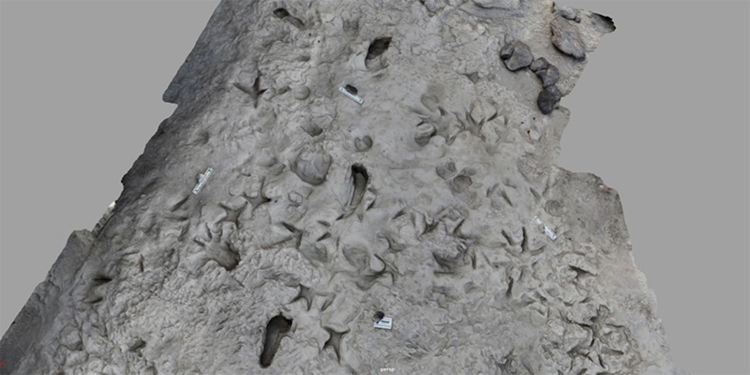Fossilized footprints of two distinct hominin species have been discovered in Africa.
The bipedal human appeared on Earth approximately 1.89 million years ago and became extinct, according to various data, between 0.4 and 0.1 million years ago. Its brain was smaller than that of modern humans but larger than that of Paranthropus boisei, a representative of one of the robust australopithecine species. Paranthropus inhabited the planet roughly 2.3 to 1.2 million years ago, with an average height of about 137 centimeters.
In 2021, during excavations in the Koobi Fora formation (Kenya), paleoanthropologists discovered the skeleton of an ancient hominin, along with traces of animals, large birds, and a footprint. Scientists were unable to confidently determine whether it belonged to Paranthropus or early Homo, leading them to return to the site a year later, where they found 15 footprints dating back 1.5 million years through further excavation.
Now, an international research team led by Kevin Hatala from Chatham University (USA) has analyzed the footprints. The results, published in the journal Science, allowed researchers to identify not only the species of the footprints but also the body mass, speed of movement, and even potential behavioral characteristics of the individuals who left them.
It is important to note that fossilized footprints provide a reliable source of information about ancient humans and Paranthropus (once formed, footprints cannot be moved or distorted). Often, these traces are preserved in mud, volcanic ash, and silt.
To analyze the shape, size, and microscopic features of the footprints, the research team employed high-precision 3D scanning and digital microscopy techniques. The results indicated that 12 footprints belonged to Paranthropus boisei, while the other three were from a bipedal human.

Thus, it appears that Homo erectus and Paranthropus coexisted in this part of East Africa and occupied the same area with only a few hours' difference (time was determined by interpreting the sediment accumulation conditions on the surface of the footprints). Moreover, they may have encountered each other. However, since Paranthropus boisei is not an ancestor of modern humans, such a "meeting" was unlikely to have been a pleasant one.
“This is the first direct evidence that two different species of hominins not only lived at the same time but also hunted in the same areas,” explained lead author Kevin Hatala.
Particularly interesting were the identified differences in bipedalism. Specifically, the footprints of Homo erectus indicated a more modern gait (similar to ours), in contrast to Paranthropus, whose footprints suggest a different manner of walking. Differences in foot anatomy and modes of locomotion may indicate various survival strategies among hominins and interspecies competition. Notably, these ancient lake visitors also appeared quite different (for instance, the legs of Paranthropus resembled those of monkeys).
The discovered footprints are not merely marks on stone; they represent a significant achievement in paleoanthropology. The authors of the study noted that the coexistence, competition, and potential interaction between these two vastly different hominin species could have influenced the emergence of Homo sapiens. This discovery also supports the idea of nonlinear evolution in early Homo, which resembles a complex tree with multiple overlapping branches.
If the conclusions drawn from the study are accurate, then 1.5 million years ago, the bipedal human and Paranthropus boisei lived in the same resource-rich area. The research team plans to continue excavations in the Lake Turkana basin in hopes of uncovering additional evidence of coexistence and interaction between different hominin species.
Previously, Naked Science wrote about the discovery of Paranthropus teeth found near Olduvai tools and bones of butchered hippos. Although there were no traces of Homo present, such findings may also indicate interspecies interactions between the ancestors of humans and extinct Paranthropus: the former may have theoretically preyed on the latter.